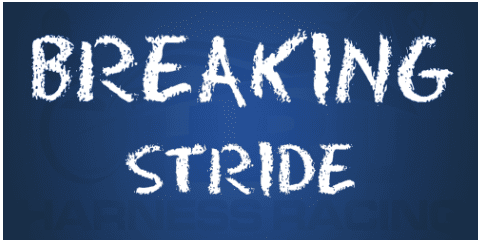Flying Colors
by Trey Nosrac
Our task this week is to re-engineer our harness races to make it easier for spectators and gamblers to follow the action.
Except for those of you blessed with the vision of a Marvel Comic Super hero or those of you with a pair of magic binoculars, at some point during the race you have lost sight of the horse on which you had placed your wager. Maybe you glanced away and then failed to relocate your horse. Maybe you simply have poor vision. Maybe your horse is racing at the back of the pack and drifts in and out of the video feed picture. Maybe snow, rain or fog clouds your vision. Maybe a rabid pal knocks off your spectacles while wildly cheering.
Whatever the reason, it is no fun to play “Where’s Waldo” during a horserace.
Ironically, being at the racetrack can make the picture worse. Many a time while watching a County Fair harness race, a good portion of the race takes place behind an infield cluttered with mobile homes, tractors or buildings. Spectators sit in the grandstands waiting for the great re-emergence to occur.
Even at commercial tracks, the back of a racetrack can be a long way from the top of the grandstand or clubhouse. Quick confession, the last time I attended a racetrack, I watched the races and the replays on my iPad, only looking up for the stretch run. As tracks ramp up their presentation with drones and high definition live streaming, we will follow races on our screens.
No matter the presentation, a harness race can be a fast moving, congested affair. The easier it is for a person to follow their horse in a race, the more enjoyable the experience. When you cannot see what is going on, a lot of the drama and fun are lost. I am sure many of us who have tried to introduce new people to our old sport find at the end of a thrilling contest that the new person will say, “I did not know where my horse was after the first turn.”
Once again, this is our basic object — a harness race.
Open your junk box and open your mind. Do a little re-engineering and clear up our picture. While you are inventing, here is Trey’s take. This time, my creation will be old school. There will be no laser identification, holograms or high-tech stuff. A seven-year-old could suggest this plan.
For our new look, in addition to the traditional number on the colored saddle pad, each driver will don a saftey vest that matches the post postion colors. The vest will match color co-ordinated wheels on the track-supplied race bike. The driver will wear a helmet of the same color. This seems so simple. If you bet on the number one post, your entry will look like Little Red Riding Hood. Post position three will look like the White Knight. Etc.
In my days at Kent State University, the home of the Golden Flashes, our team would be clad in navy blue jeresys and shocking gold pants. When the Ohio University Bobcats dropped by to pummel us, they would be clad in white jeresys and white pants. This enabled identifcation when large clumps of players collided.
Imagine what a confusing jumble a football game would be if each player wore an individual uniform. If you think about a harness race, this jumble is part of our picture. Our customers, on track, off track, or in Timbuktu could follow races more clearly if the horse they favor is one color from head to hoof. This visual clue would make harness racing an improved product.
You may notice that I slipped the phrase “track-supplied race bike” into a previous paragraph. This, in my opinon would be a bonus asset in this colorful reconfiguration of our sport. Factoring in equipment is complicated territory for bettors, trainers and owners. We scratch our heads and wonder if the driver is using a “Super Swooper Bike” or if a “Super Swooper Bike” is of slight benefit.
A few hardcore people may like this intrigue, but when Trey lays down some cheese, he prefers a fair race and that each race bike be indentical. He does not want to guess whether or not a bike gives a horse an advantage. Standardized, track-supplied race bikes would keep each racing stable from chasing the latest and greatest and from hauling race bikes from racetrack to racetrack.
The new look and standardization of race bikes would take little effort to impelment. Participants and customers would make the adjustment. Yes, it is different. A few individuals will have a different slant, but we need changes to freshen a stale look. What stops changes like this?
Color Trey perplexed. Color the drivers and sulkies the same.
















